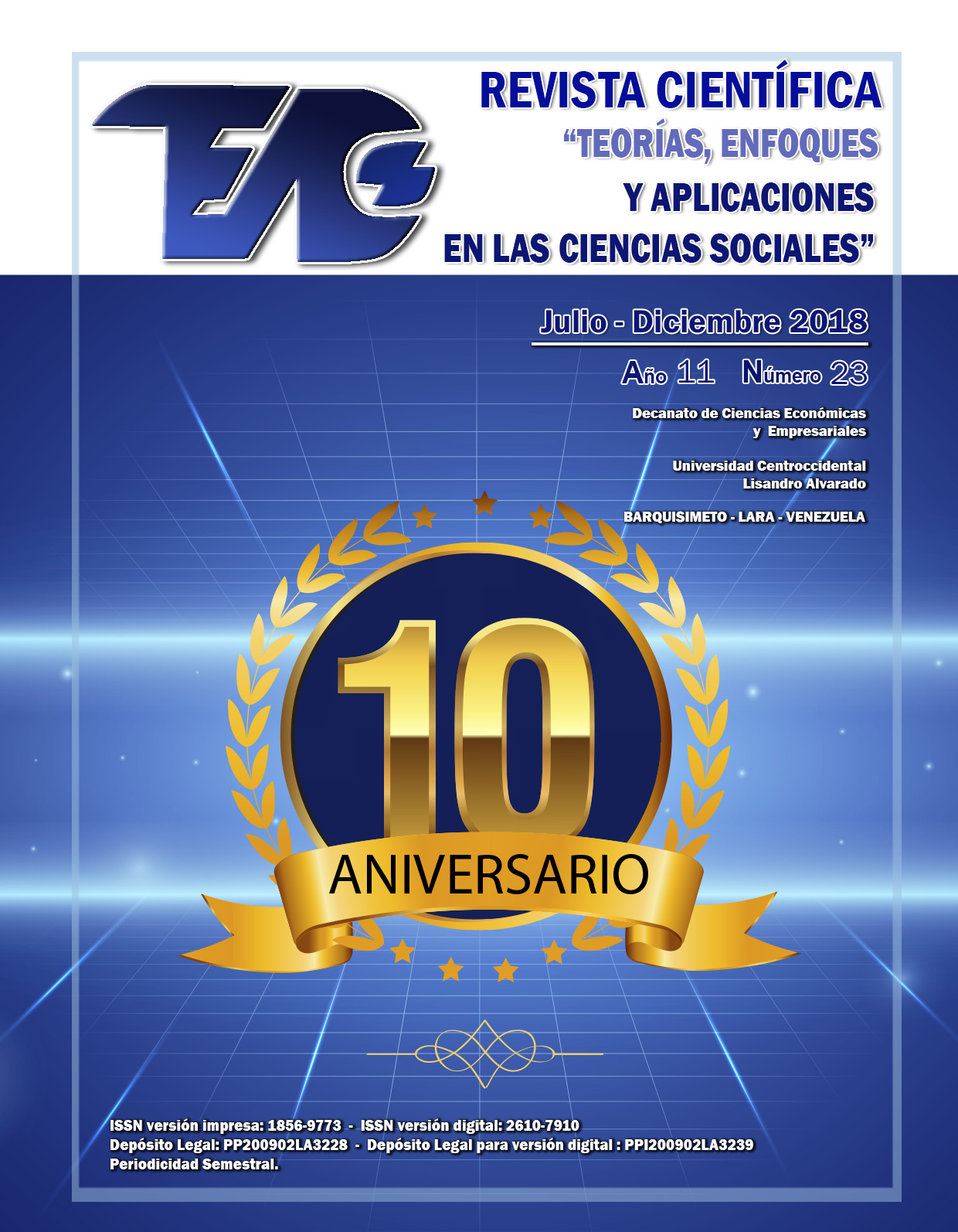Strategies in the minimization of psychosocial risks present in the teaching staff of the bolivarian integral school: "Rafael Rangel" II of The Municipality Nirgua Yaracuy State
Keywords:
management strategies, psychosocial diseasesAbstract
We worked on the basis of promoting the minimization of psychosocial risks in the teachers of Escuela Integral Bolivariana: "Rafael Rangel" II of the municipality Nirgua Yaracuy, through management strategies. The study was conducted under the modality of field research under the socio-critical paradigm, participatory action research method (IAP); taking the labor characteristics of 13 teachers during the 2012-2013 school year to be active in their duties. It concludes by highlighting the importance of disseminating information for the health of education workers and urging other researchers to address this issue to promote change. It is recommended that the director of the institution pursue the strategies implemented to consolidate a healthy life culture and act in a preventive manner in the face of threats to the health of the staff. The study was conducted under the modality of field research under the socio-critical paradigm, participatory action research method (IAP); taking the labor characteristics of 13 teachers during the 2012-2013 school year to be active in their duties. It concludes by highlighting the importance of disseminating information for the health of education workers and urging other researchers to address this issue to promote change. It is recommended that the director of the institution pursue the strategies implemented to consolidate a healthy life culture and act in a preventive manner in the face of threats to the health of the staff.
Downloads
References
• Báez, C. (2010). Factores y riesgos psicosociales, formas, consecuencias, medidas y buenas prácticas. Tesis publicada, Universidad Autónoma de Madrid, España.
• Bresó, E. (2008). Taller del Burnout al Engagement”. Sistema de Estudios de Posgrado. Universidad de Costa Ric, Costa Rica: San José.
• Cedeño, A. (2006). Caracterizar los Factores de Riesgos y su efecto en la salud de los operadores de Plata de la Estación Principal Morichal (EPM-1), al sur-oeste de la Ciudad de Maturín, Estado Monagas. Trabajo de grado (Especialización en Salud Ocupacional. Mención Medicina del Trabajo).Universidad Nacional Experimental, Guayana.
• Cox, T. y Griffiths, A. (1996). Evaluación de los riesgos psicosociales en el trabajo. Manual de Psicología de la Salud. USA.
• Cuenca, R. (1996). Introducción a los riesgos laborales de naturaleza Psicosocial. Instituto Nacional de Seguridad e Higiene en el trabajo. España: Madrid.
• Dolan, S. García, S. y Díez, M. (2005). Autoestima, estrés y trabajo. España.
• Durán, M. (2010).Bienestar Psicológico: el Estrés y la Calidad de Vida en el Contexto Laboral. Tesis a grado, Universidad Estatal a Distancia, Costa Rica.
• González, E. (2009).Diseño de un ISTEMA DE Vigilancia Epidemiológica de Accidentes de Trabajo y Enfermedades Ocupacionales. Caso Empresa Metalmécanica Cinco, C.A. Barcelona Estado Anzoátegui. Tesis a posgrado, Universidad Nacional de Guayana, Venezuela.
• Karasek, R, T Theorell.( 1990). . Healthy Work, Stress,Productivity and the Reconstruction of Working Life.Nueva York, USA.
• OIT (1986). Factores psicosociales en el trabajo: reconocimiento y control. Ginebra.[Informe en línea] Serie 56.Seguridad, higiene y medicina en el trabajo .Disponible :http://biblioteca.uces.edu.ar/MEDIA/ED-OCS/FAC-TORES_Tex-to.pdf.[Consultada: 2012, diciembre 10]
• OIT (1998). Enciclopedia de salud y seguridad en el trabajo. Gestión editorial Chantal Dufresne, BA. [Documento en línea] Disponible enhttpttt://www.bvsst .org.ve/documento s/portada /REFDD03/enciclopedia_salud.pdf. [consulta 2013, enero 21].
• OIT (2010). Lista de enfermedades profesionales de la OIT. [Conferencia en línea]. Disponible:http://www.ilo.org/wcmsp5/groups/public/@ed_protect/@protrav/@safe-work-/documen-/publication/wcms_125164.pdf.[Consultada: 2012, enero 20]
• OMS (1948).Constitución de la Organización Mundial de la Salud. [Informe en línea] Disponible en: http://ww w.who.int/gb/bd/PDF/bd46/s-bd46_p2.pdf. [Consulta: 2013, enero 10].
• OMS (2010) Entornos Laborales Saludables: Fundamentos y Modelo de la OMS. Contextualización, Prácticas y Literatura de Apoyo.
• Parra, M. (2001).Salud Mental y Trabajo. Monografías de Gestión en Psiquiatría y Salud Mental. Universidad de Santiago. Chile. Disponible: http:// www.psiquiatriasur.cl/portal/uploads/saludmentaltrabajo.pdf .[Consultada: 2012, febrero,14]
• Trujillo, C. y García, C. (2007) .Impacto del Estrés Laborar en la Institución Financiera FAVI de la Universidad Tecnológica de Pereira. Universidad Tecnológica de Pereira, Tesis a grado, España
Published
How to Cite
Issue
Section
Derechos del/de autor/es a partir del año de publicación
Esta obra está bajo la licencia:
Creative Commons Reconocimiento-NoComercial-CompartirIgual 4.0 Internacional (CC BY-NC-SA 4.0)
Las opiniones expresadas por los autores no necesariamente reflejan la postura del editor de la publicación ni de la UCLA. Se autoriza la reproducción total o parcial de los textos aquí publicados, siempre y cuando se cite la fuente completa y la dirección electrónica de esta revista. Los autores(as) tienen el derecho de utilizar sus artículos para cualquier propósito siempre y cuando se realice sin fines de lucro. Los autores(as) pueden publicar en internet o cualquier otro medio la versión final aprobada de su trabajo, luego que esta ha sido publicada en esta revista.



